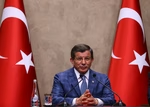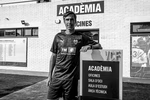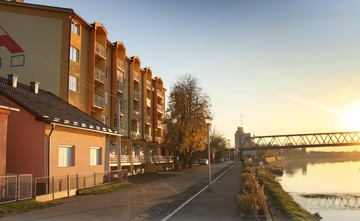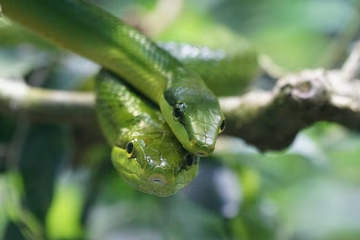Names of children killed during Sarajevo siege listed as children killed in RS

Families of children killed during the siege of Sarajevo were deeply disturbed after the names of their loved ones falsely appeared on the list of the children killed in the neighbouring city of Istocno Sarajevo, which is administratively situated in Bosnia's Serb-majority part, Republika Srpska. Some of the families announced lawsuits.
Marko Lukic was killed on July 26, 1995 in Sarajevo's Mejtas neighbourhood when he was 11. He was killed after the Bosnian Serb Army shelled the city from the hills surrounding it.
His mother Suzana Lukic and brother Miroslav Lukic were shocked after they saw a media report from April this year produced by RTRS, the public broadcaster in Republika Srpska, which narrates the story about the lack of justice for the children killed in Istocno Sarajevo. Among the children was the name of their brother and son Marko.


Speaking to N1, Miroslav said they were deeply disturbed. Then he shared some memories of his brother.
“This is where the grenade exploded near the school. He was crossing the street near the bakery. He was at the grandma's on that day. He was killed on his way back. It is a horrible feeling and a great disappointment in institutions of BiH, which allowed something like this to happen,” said the brother, who announced a lawsuit.
Marko is not the only one who appeared on the list. There are also Damir Dodik and Mirjana Malesevic – whose youth was interrupted during the war. They appeared, like Marko, on the list that was created by the Republika Srpska's Centre for Investigation of War and War Crimes in the municipalities of what was called Serb Sarajevo during the war.
17-year-old Damir Dodik was killed a day before Marko. He was riding a bike when he was shot by a sniper directly in his heart, on July 27, 1995. Damir was buried at the Kovaci cemetery, in Sarajevo's Old Town.
Mirjana Malesevic, a 16-year-old girl, was killed on February 27, 1993. She was with her friend Samir on the way to visit their other friends. After she was shot, Samir tried to help her but a mortar bomb then killed them both.
Their unfortunate stories were shared by Sniper Alley, a social media account that collects, archives and preserves photos of world-renowned photojournalists who covered the Siege of Sarajevo 1992-1996, keeping the memory of the fellow citizens killed during the siege.
Fikret Grabovica, the head of the Association of the Killed Children of Sarajevo under the Siege deems that the Prosecutor's Office of BiH shares the responsibility for what is happening now. He sees the situation as an attempt of equalising a victim and a criminal, and as a classic retailoring of historic facts.
Speaking to N1, Grabovica said the whole experience is very painful and stressful for the families.
He believes that this did not happen by mistake but was intentional.
“If those who are trying to retailor the history had no accomplice in the Prosecutor's Office of BiH, this would not be happening. Ones are very motivated by circumstances and are doing everything to reach their goal, and the others are very good accomplices,” he stressed.
The family of fourth kid reached N1 after seeing the story.
Davor Malesevic found his brother Igor on the same list. He was killed in Sarajevo's Cengic Vila neighbourhood in 1992 when he was only eight.
“I am disturbed by the fact that the name of my brother is on the list of the children killed in Republika Srpska. My brother was killed on August 11, 1992 in Cengic Vila, in front of our building where we spent entire war and where my mother lives today,” said Davor, adding that his brother's name is even engraved in the memorial to the killed children of Sarajevo in the city's centre.
“I would like to ask you to publish a retraction for all children whom they are trying to present as their own children, while they were killed by them,” he underlined.
Republika Srpska's Centre, which published the list, denied the accusations, saying that all that has been published these days has a goal to “discredit the Centre and RS institutions.”
“Unfortunately, bearing in mind the fact that all this information has been available to the public for many years, and that, as we stated, we invited all interested parties to contact us, we cannot escape the impression that everything published in the public had for the purpose of discrediting the Centre and institutions of Republika Srpska,” they said, adding that they removed the names of the children whose family members asked for it.
“Their names will not appear in new editions either,” it added.
The case sparked strong reactions in Sarajevo, whose mayor Benjamina Karic said “we grieve for every killed child anywhere on this planet, but we will not allow lies.”
“The City of Sarajevo stands with the families of the victims and we will use all legal means to hold accountable all those who misused innocent victims, killed Sarajevo youth,” the mayor said.
Also, it comes only days after a photo of a Bosniak mother with children fleeing the horrors of the war in the eastern Zepa enclave appeared on a large screen behind Milorad Dodik, Republika Srpska President, as he was giving a speech during a commemoration for the Serb victims of the 1995 Operation Storm.
Nermina Mujkic Guso, who is one of the children on the photo, confirmed the authenticity of the photo.
“This is injustice,” she told N1.
“Although I don't remember what happened, I know, and we all know, that in that period, when the photo was taken, the biggest crime in Europe after World War II, the genocide in Srebrenica, was being committed”, she said.
“The crimes against us were committed by those who put us on that screen, and our “Storm” was in Zepa and Srebrenica”, she added.
Republika Srpska authorities, which organised the commemoration, said it was an unintentional mistake made by a Belgrade PR agency, which prepared the materials for the event.
Attempts to present it in any other way is a manipulation aimed at opening a “whole new circle of recalculating the victims and 'measuring' whose suffering was bigger”, said the Ministry of Labour and Veterans.
Kakvo je tvoje mišljenje o ovome?
Učestvuj u diskusiji ili pročitaj komentare





 Srbija
Srbija
 Hrvatska
Hrvatska
 Slovenija
Slovenija



























































